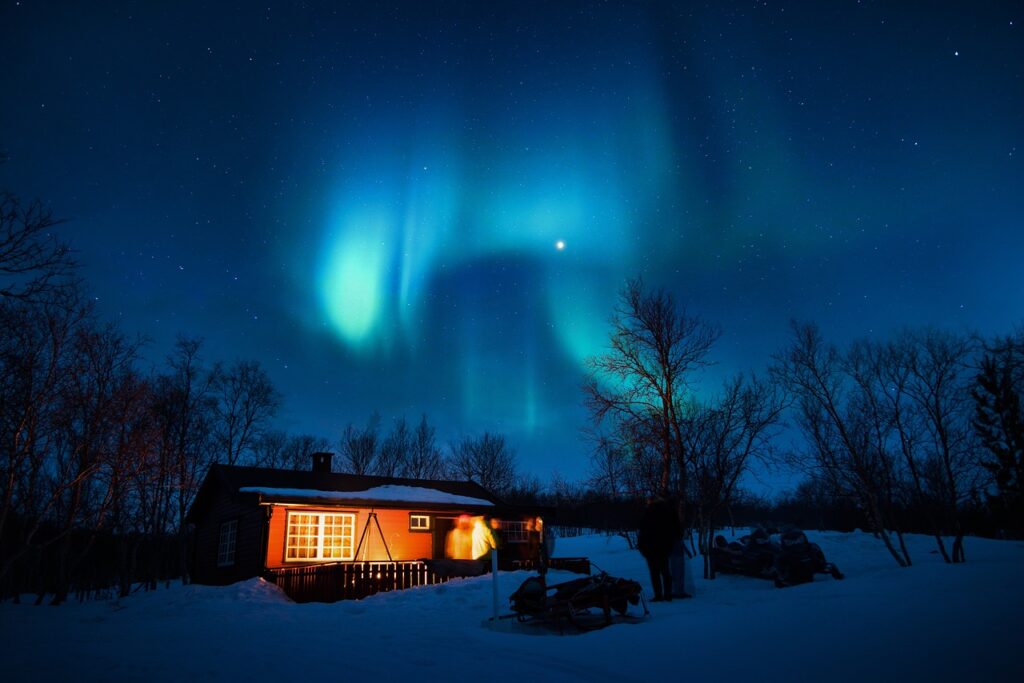What is Iceland known for? As a land of fire and ice, this captivating Nordic island has earned a global reputation for its breathtaking landscapes, untamed wilderness, and a unique blend of natural wonders. From towering glaciers and powerful waterfalls to mesmerizing geothermal activity and a rich Viking heritage, Iceland offers an abundance of experiences that leave visitors in awe. Whether it’s soaking in geothermal hot springs, exploring lava caves, or encountering wildlife in its pristine habitats, Iceland’s diverse offerings continue to captivate the hearts and minds of travelers from around the world. So, without further delay, let’s delve into some of the most important reasons Iceland is known worldwide. Natural Landscapes | What is Iceland Known For Iceland captivates visitors with its stunning natural landscapes, which encompass glaciers, waterfalls, geysers, volcanoes, and geothermal areas. Thus, its unique geological features attract tourists from around the world, making it a renowned destination for nature enthusiasts. 1. Jökulsárlón (Glacier Lagoon): Situated in southeastern Iceland, Jökulsárlón, also known as Glacier Lagoon, enthralls visitors as a breathtaking natural wonder. This glacial lake, which brims with crystal-clear turquoise water, surrounds itself with majestic icebergs that calve from the nearby Breiðamerkurjökull glacier. Visitors find themselves captivated by the surreal beauty of the lagoon, where icebergs of various shapes and sizes serenely float, crafting a mesmerizing scene. Additionally, it serves as an ideal spot for boat tours. Therefore, it allows guests to cruise among the icebergs and witness the interplay of light and color reflected in the glacial water. 2. Geysir & Strokkur: Positioned in the geothermal area of Haukadalur, Geysir takes its place as one of Iceland’s most famous geysers and the namesake of all geysers worldwide. It proudly exhibits the raw power and natural spectacle of erupting hot springs. However, while Geysir itself shows reduced activity today, its neighbor Strokkur steals the show with its frequent eruptions. Strokkur propels scalding water up to 30 meters high, captivating visitors with its impressive displays. Visitors eagerly gather around, anticipating each eruption with excitement as Strokkur mesmerizingly performs its display every few minutes. Moreover, the bubbling and hissing geothermal activity in the area creates an otherworldly experience, continually reminding us of the fiery forces beneath our feet. 3. Diamond Beach: Diamond Beach, located near Jökulsárlón Glacier Lagoon, is a magical shoreline adorned with glittering ice diamonds. As icebergs from Jökulsárlón make their way to the ocean, they get washed ashore, creating a striking contrast against the black volcanic sand. These translucent ice chunks, glistening in the sunlight, resemble scattered diamonds, hence the name. Walking along the beach, you’ll be amazed by the myriad of ice sculptures in various shapes and sizes. A sense of enchantment fills the air as these sculptures create a truly captivating and surreal ambiance. 4. Waterfalls: Iceland is renowned for its numerous majestic waterfalls that cascade through its dramatic landscapes. From the mighty Gullfoss, plunging into a rugged canyon, to the elegant Seljalandsfoss, offering a unique opportunity to walk behind its veil of water, each waterfall holds its own allure. These majestic natural wonders captivate visitors with their awe-inspiring beauty, thundering sounds, and delicate mist that fills the air. Moreover, they provide a chance to connect with the untamed power of nature and experience the raw force of cascading water firsthand. 5. Volcanoes: Hiking to the summit of volcanoes such as Hekla or exploring volcanic craters like Krafla’s Víti offers an extraordinary opportunity to witness the geological forces that have shaped this captivating island. In doing so, adventurers embark on a remarkable journey, venturing into the very heart of Iceland’s fiery past. Moreover, Iceland’s volcanic wonders reveal the immense power and constant transformation that lie beneath our planet’s surface. Ultimately, these geological marvels invite intrepid explorers to immerse themselves in a world where the raw forces of nature shine Northern Lights | What is Iceland Known For Iceland stands as one of the premier destinations to witness the captivating dance of the Northern Lights. Also known as Aurora Borealis, this phenomenon enthralls visitors with its mesmerizing displays of shimmering lights in the night sky. Perched on Iceland’s edge, the Northern Lights unfurl their vibrant spectacle, thereby captivating viewers against the backdrop of untouched landscapes. With its dark and unpolluted skies, Iceland offers optimal conditions for experiencing the celestial spectacle in all its glory. At the same time, the volcanoes, black sand beaches, and icy landscapes further enhance the allure of the Northern Lights. Together, these components formulate a magical and otherworldly setting. Outdoor Activities | What is Iceland Known For Iceland entices with its many outdoor activities, each brimming with exhilarating experiences. Indeed, from heart-pounding hikes to awe-inspiring ice climbing, horseback riding through scenic landscapes to captivating glacier tours, and the thrilling encounters of whale watching, this land of diverse landscapes offers an array of adventures. Adventurers are invited to delve into the untamed beauty, yet to emerge transformed, captivated by the indomitable spirit of Iceland. 1. Glacier Hiking: Without a doubt, embarking on an exploration of Iceland’s awe-inspiring glaciers presents a thrilling adventure. Visitors can witness stunning ice formations, crevasses, and unique landscapes, all while their senses are immersed in the pristine beauty of this icy wonderland. Undoubtedly, the sheer magnitude and grandeur of the glaciers evoke a sense of awe and reverence, as nature’s frozen sculptures unfold before their eyes. The crackling sound of ice, the shimmering blue hues, and the crisp mountain air combine to create a truly unforgettable experience. Truly, it’s a journey that takes you to the heart of Iceland’s frozen realm, where the forces of nature have sculpted a breathtaking landscape unlike anywhere else on Earth. 2. Golden Circle Tour: This classic route encompasses three iconic natural wonders, namely Þingvellir National Park, the Geysir geothermal area, and the majestic Gullfoss waterfall. In other words, you get to experience the breathtaking essence of Iceland’s diverse landscapes all in one remarkable journey. Clearly, this has to be a bucket-list experience for any nature enthusiast or adventurous traveler! 3. Whale








